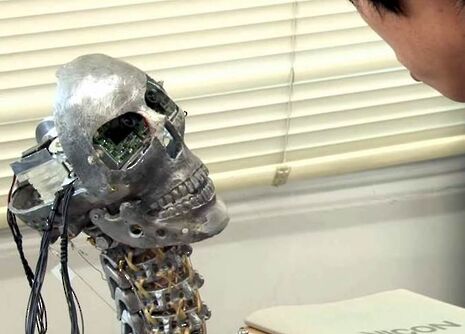Techwatch: Robots: fun and games in the uncanny valley
Charlotte Gifford takes a look at the unnerving world of humanoid robots

Robots tend to fall into two categories – adorable critters, or deplorable droids that should be killed with fire.
The second, creepier robots are the ones that fall into what’s called “the uncanny valley”. This is the term used to describe the point at which something is so close to human – and yet not quite human enough – that those faced with it feel uneasy, even repulsed. As technology comes closer to achieving some kind of human imitation, understanding this fear and how to overcome it is crucial to making robots more acceptable. For example, there’s a huge market for robot companions, especially in countries like Japan which have an ageing population and where many elderly people live alone. Now, the last thing you would want is to be landed with a robot companion you’re scared to be in the same room with. So it seems a good idea to steer clear of the potentially unnerving human-like companion, and to instead draw upon inspiration from the animal kingdom when designing a robot. The end result is Paro, a therapeutic robot that’s modelled off a baby seal. It likes cuddles and the sound of your voice. And it showcases everything we clearly want in a robot – big eyes, fluffiness, and the occasional baby-like sound to get our attention.
But we can’t expect all robot designers to go around building baby seals, as amazing as that might be. Roboticist Hiroshi Ishiguro, who believes that androids might one day replace popstars and newsreaders, is determined to make them look as humanlike as possible. In fact, he’s so determined to do this that he’s built an android of himself, Geminoid HI-1. Impressively similar to the real thing, it’s made its way onto several Top 10 Creepiest Robots lists.
This in itself is a big motivation for roboticists to build something that looks a bit more appealing: in order to avoid the flack you get on the internet when you accidentally animate someone’s nightmare. “Boffin builds World’s Ugliest Robot”, and “Happy Birthday, Horrifying Japanese Child Bot: You’re Two” scream the headlines of articles written by those who’ve evidentially been a bit disturbed by these creations. I don’t know how long it takes to build a robot, but I imagine quite a while. So I imagine it would be pretty annoying if, after all that time and effort, you went viral as the person who built a slightly unsettling robot once, rather than being heralded for having made an important contribution to robotics.
But these headlines have a point. I’ve seen a clip of the “child bot” in question, CB2, and it moves like a dazed toddler trapped in a rubber suit. So what exactly is it that’s so off-putting about these robots? One theory is that it’s a defence mechanism to protect us from disease. Rhesus monkeys show a similar aversion to “uncanny” beings, which suggests it might be an evolutionary thing. Another theory is that we feel discomfort whenever there’s a mismatch between a humanlike appearance and inhuman movements. No matter how realistic they look, if a robot’s facial expressions are too slow, or its walk is jerky, you’ll secretly wish for it to be sent back into the flames from whence it came. Some scientists insist once you spend enough time with a robot and adjust to the mechanical way it moves, you’ll warm to it – assuming you haven’t already run for the hills.
Perhaps there’s no getting past this. Robots are, by their nature, a bit creepy. Even if we do manage to progress past “the uncanny valley” and construct a robot that’s so lifelike it’s almost indistinguishable from a human being, it’s hard to imagine we won’t still find it ridiculously intimidating. If anything, it might make things even worse. You’d never know for certain whether you were speaking to a human being. It’d be like Blade-Runner. If you ask me, we should just stick to making baby seals.
 News / Cambridge bus strikes continue into new year16 January 2026
News / Cambridge bus strikes continue into new year16 January 2026 News / Uni members slam ‘totalitarian’ recommendation to stop vet course 15 January 2026
News / Uni members slam ‘totalitarian’ recommendation to stop vet course 15 January 2026 Science / Why smart students keep failing to quit smoking15 January 2026
Science / Why smart students keep failing to quit smoking15 January 2026 Interviews / The Cambridge Cupid: what’s the secret to a great date?14 January 2026
Interviews / The Cambridge Cupid: what’s the secret to a great date?14 January 2026 Comment / Will the town and gown divide ever truly be resolved?12 January 2026
Comment / Will the town and gown divide ever truly be resolved?12 January 2026








